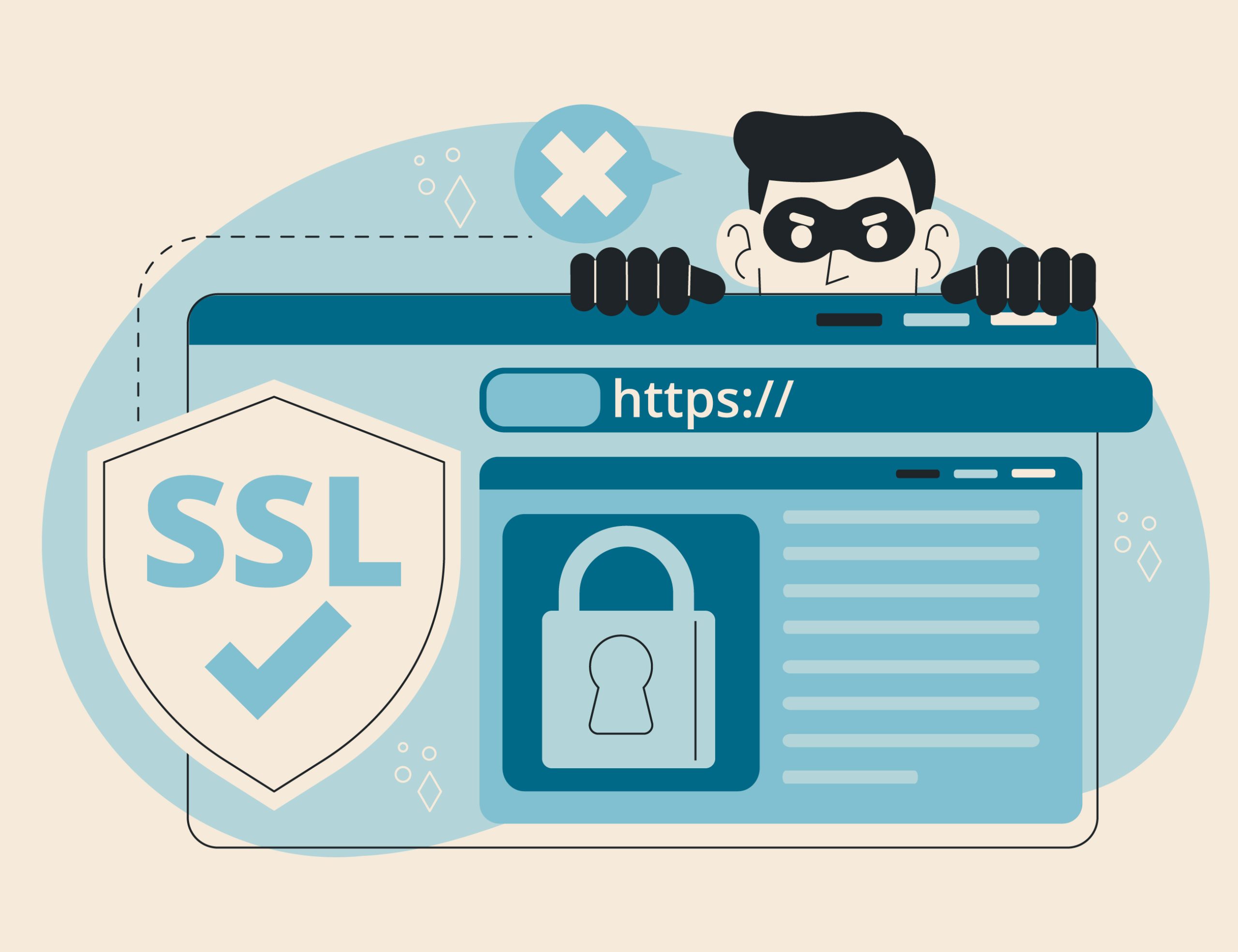
Many Internet users have only superficial information when it comes to the protection of confidential data. Let’s get acquainted with this topic a little closer and tell you what SSL TLS is.
First of all, Secure Sockets Layer and Transport Layer Security are the names of popular cryptographic protocols designed to ensure secure communication on the Internet. They are used to encrypt information and protect authenticated Internet connections while browsing various pages. In this article, we will look at what SSL TLS is and how it works from the inside.
Historical excursion
An SSL TLS certificate is a type of digital object with which algorithms determine identity and select encryption to form a connection with a contacting system using the SSL/TLS protocol.
Certificates are used in a PKI cryptographic system. It is through the concept of public keys that one party can authenticate another using certificates (if they both have trust in a third party, i.e. a certificate authority).
On this basis, SSL TLS certificates can be considered a kind of digital proof of identity that protects network communications and determines the reliability of websites on the Internet.
SSL was created and published in 1995 by Taher Elgamal. He wanted to ensure the secure sending of data between different users of the World Wide Web. Later, in 1999, Tim Dirks and Christopher Allen introduced TLS, improving the SSL system. Since then, the second option has been more actively used.
Basic principles of SSL/TLS certificate operation
The process of client and web server data exchange is very vulnerable, because all information is publicly available and is not protected from third parties. This interaction is very insecure for users. SSL TLS secure channel is designed to encrypt the connection by encoding the communication, allowing only an authorized party to receive the data. Such a tool is very effective in protecting personal data and confidential information.
The process of interaction with websites can be conditionally divided into four steps.
Initialization.
Server response.
Authentication and creation of appropriate keys.
Sending data.
When a user visits any website, the browser used for this purpose sends a request to the server to get the certificate data. The server, in turn, sends a duplicate SSL certificate and the assigned unique public key. The browser examines and verifies the certificate to see if its name matches the name of the website. In the case of a positive result of the check, it starts generating a preliminary secret with the maximum possible level of encryption on both sides. The server decrypts the secret by applying a private key and generates a shared secret with a specific encryption type. When the session ends, the key is revoked.
What are the similarities between SSL and TLS?
TLS or SSL are data transfer protocols. They encrypt information that is forwarded within different servers and applications. The second party can be users or a system. Secure data exchange is ensured by authentication of the communication participants connecting by the network.
TLS acts as a direct successor to SSL. The second one has long been irrelevant, as all versions are obsolete. But the use of this term is often encountered when describing TLS.
The purpose of functioning of these protocols is also the same. Both of them were designed for encryption and authentication. By using digital certificates, they simplify the connection approval process and encrypt the connection between the browser and the web server.

Main differences: SSL and TLS
Despite the similarity of the purposes of functioning, SSL and TLS protocols have different principles of operation. The reason for these differences is the constant improvement of protocols and changes.
The most distinctive difference is felt in the handshake process.
The SSL handshake was presented as an explicit connection, while the TLS handshake was implicit. In the first case the algorithm was much more complicated and contained more steps. But with the creation of TLS, the process was shortened and there were fewer cipher suites.
There are also differences in notification. In SSL there were only two types of such messages:
- warning;
- unrecoverable.
The former reported an error that was not a threat to the connection, the latter reported the need to terminate the connection immediately. SSL alerts were not subject to encryption.
TLS introduced another notification – about a completed closure. It is displayed when the session is terminated. In order to achieve the maximum level of security, the developers applied encryption.

How to browse the web securely with HTTPS?
Let’s understand how SSL TLS with HTTPS works to keep web traffic private. Sites that support HTTPS often use SSL/TLS to authenticate and encrypt the traffic that passes between the browser and the server
For their own peace of mind, users can determine if a site has an SSL certificate by detecting characteristic indicators:
- a lock icon, confirming that the connection is safe and secure;
- https:// – the presence of the letter S at the end indicates the use of encryption.
HTTPS allows you to protect data, as unencrypted information is often at the disposal of a third party and can be used against users.
Mobile proxies allow you to keep the confidentiality of information from your phone. This is no less reliable method of preventing data leakage. If you are not sure that the service is working properly, you can use proxy checker online to check the efficiency of the application.
How can I become an SSL /TLS certificate holder?
The use of SSL TLS is available to every client. To connect HTTPS, you should first contact an official certification center, where you will be assigned an SSL/TLS certificate. This is not a very complicated process, which can be handled by the site owner.
Create a request with public key and domain data to sign a certificate.
Sending CSR C not to a certification center to confirm identity and obtain a certificate.
Install a certificate reservoir and SSL TLS connection using HTTPS.
Clients can choose the appropriate level of certificate. Some of them are designed for verification only, while others provide for extended verification, ensuring maximum trust. Keeping the certificate up-to-date ensures optimal security for both parties.









